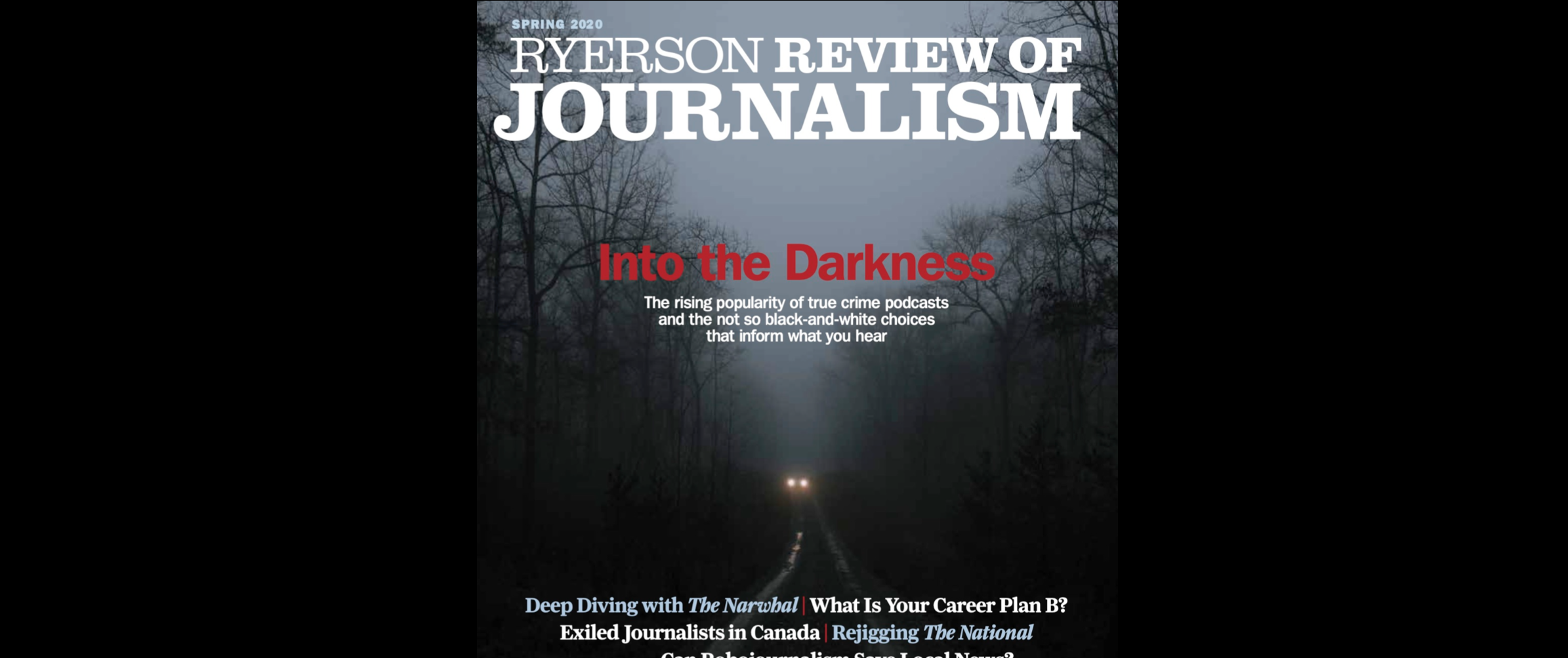Our job at the Ryerson Review of Journalism is to record Canadian journalism as we live it and as it evolves. When we first gathered as a masthead in September last year, we pitched stories about trends, people and publications that spoke to key developments in our industry at the time. As those stories progressed, we started to pinpoint themes in the issue – the past, present and future – with a particular focus on how uncertainty in the world of journalism is translating into innovation and changing practices. Months later, the world itself changed with the onset of the COVID-19 pandemic.
Like many newsrooms, the RRJ was forced to operate remotely over the past few months as the masthead approached its publication deadline. Now, with several public health crises as the backdrop to the release of our latest issue, the stories chosen may suddenly seem somehow less urgent. At the same time, our mandate has always been to reflect on larger trends and emerging issues in Canadian journalism, instead of responding to the daily news cycle. The issues covered in our magazine won’t go away once the pandemic subsides, nor are they likely to recede as media organizations continue to come under fire for their labour practices and reckon with how they cover and respond to anti-Black racism.
In the spring 2020 edition of the RRJ, the theme of looking at the past as we seek out the future arose in several of our stories. Our cover story by Emily Latimer shows how Canadian true crime podcasts are revising some of the ethical issues traditionally associated with the genre. Her story, “The Long, Dark Trail,” shows how these podcasts are facilitating a shift towards highlighting systemic issues through storytelling.
Other stories deepen our understanding of audiences and how media outlets are responding to evolving trends. Sean Young, for example, writes about rebranding efforts in the industry, focusing on audience expansion efforts of publications such as the LGBTQA+ community’s Xtra magazine. Mitchell Consky, meanwhile, looks at how technology is creating new opportunities in local newsrooms – specifically, alerting us to the impact of advancements in artificial intelligence in journalism.
The issue examines how young journalists are navigating the precarious conditions of the industry. Hannah Alberga’s story explores the world of “casual” work arrangements across major Canadian news organizations, while Daniel McIntosh’s piece examines the choices former journalists make after leaving or being pushed out of the field. We also look at the networks of support that have sprung up from these shifts, such as the rise of collaborative investigative journalism in a piece by Tanja Saric. Altogether, these point to how journalism is moving in new directions and embracing promising partnerships in response to specific challenges. And while none of them directly address COVID-19, the pandemic has certainly highlighted the need for journalism that is innovative, responsive and which draws on the best of what technology has to offer.
While much of the news cycle may feel bleak these days, I’m hopeful that this magazine will highlight how media organizations are addressing the challenges the industry faces and how, despite all the uncertainty in the industry, young journalists, including the ones on our masthead, are seeking to meet those challenges head-on. If nothing else, we hope this issue gives you some relief from spring 2020’s relentless news cycles. It may also remind you of how crises can also present opportunities for all of us to move forward in more positive ways.
To check out this year’s issue of the Ryerson Review of Journalism, subscribe on its website here.
Editor’s note: J-Source editor-in-chief Sonya Fatah is an instructor at the Ryerson Review of Journalism.

